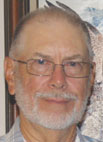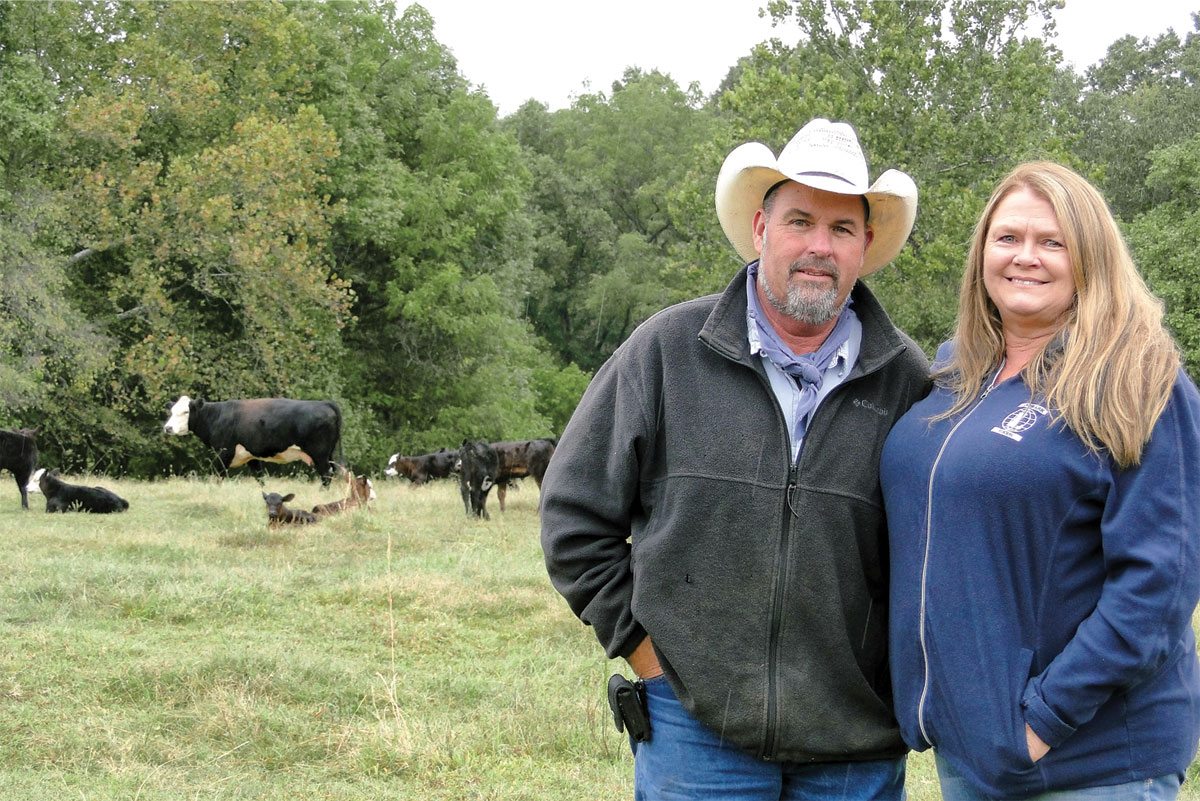 J.R. and Shirley Little, have a very pretty home, with a neatly manicured yard snuggled cozily in the middle of 306 acres of lush Bermuda grass pasture. Between their Decker Giants, a Rat Terriers breed that has become nearly extinct, and a busy cow-calf operation, Jim and his wife, Shirley have a lot to tell. Jim grew up on a farm down in Mena, Ark., down by the Washita River, his dad raised Hereford cattle, and Shirley was raised just outside Nashville, Tenn., on a farm. They also taught school, Jim was an agriculture teacher, and Shirley was a principle for an elementary school and then superintendent.
J.R. and Shirley Little, have a very pretty home, with a neatly manicured yard snuggled cozily in the middle of 306 acres of lush Bermuda grass pasture. Between their Decker Giants, a Rat Terriers breed that has become nearly extinct, and a busy cow-calf operation, Jim and his wife, Shirley have a lot to tell. Jim grew up on a farm down in Mena, Ark., down by the Washita River, his dad raised Hereford cattle, and Shirley was raised just outside Nashville, Tenn., on a farm. They also taught school, Jim was an agriculture teacher, and Shirley was a principle for an elementary school and then superintendent.
They bought the farm and its 90 head of cattle in 1985. They had 20 head of their own already, making 110 head altogether.
"We had a storm come up one evening, and lightening struck 17 head. We then sold all of our commercial cattle, and bought the registered Simmentals. I bought both kids one of their own. They were the trend, you know, back then.
"I got in on the tail end of this trend and the bottom fell out of the commercial and Simmental market," said Jim.
The Littles then started back with a Red Angus bull, and a Gelbvieh bull, and Jim noted that the Red Angus and the Simmental made a really great cross.
"I also added back some Black Angus, with the Red Angus cows, which gave us our weights. I now have three Registered Black Angus bulls, and I added a Hereford Bull which should give us some black baldies, he noted.
Jim and Shirley have decided to stay with the commercial crossbred cattle. “I have a few registered Black Angus cows, but the rest is 3/4 Angus or less,” said Jim.
The oldest Angus bull of Jim's has a story that goes with him. "I got him really young, and I had him pretty gentle, and when he got old enough I would take him by the tail, and lead him to the cows I wanted bred, I could do this as many times as I needed to. Then when I was finished, I would take his tail and lead him back into his pen."
Jim runs a fall calving operation, so he pastures all his cows together in the summer. "I start calving in September and finish up in December. The weaning starts in June, then from June, I put my bulls up. And I rotate all my cows together about every two to three days, because some of my pastures are divided up into paddocks which are smaller than a regular pasture," he noted.
But that could change soon. This year, of his some 77 cows and 27 heifers, Jim plans to cull some of the heifers and use the rest to start a new spring calving program.
Jim’s pastures are thick with bermuda grass; he planted winter rye in the east pasture, where he will put the heifers.
"Going to twice a year calving also utilizes the bulls. The cattle industry is in a major crunch right now with the feed and the fertilizer and the fuel,” said Jim. "Therefore, I’m going into a very heavy culling program.
"The economy makes the margins a lot closer, but Shirley and I are optimistic for the future of our farm."







